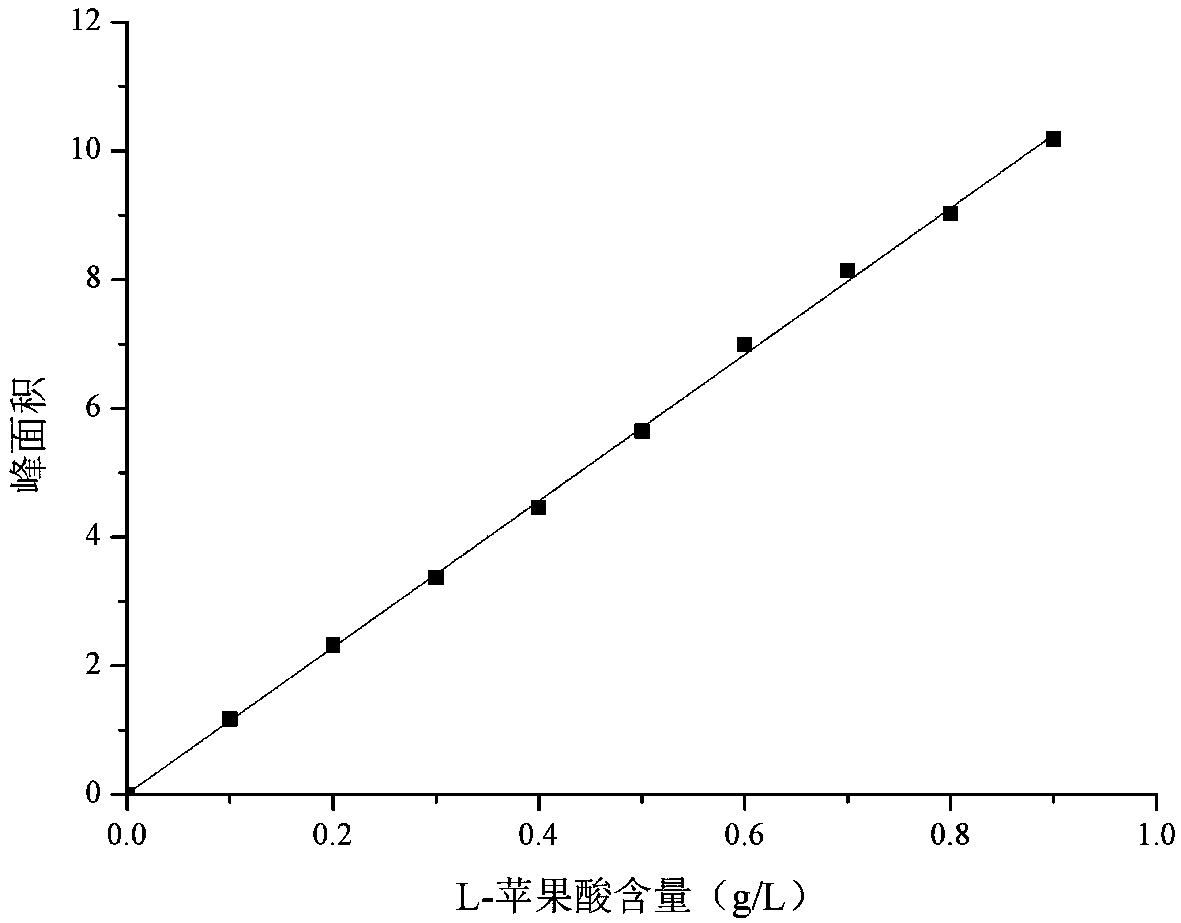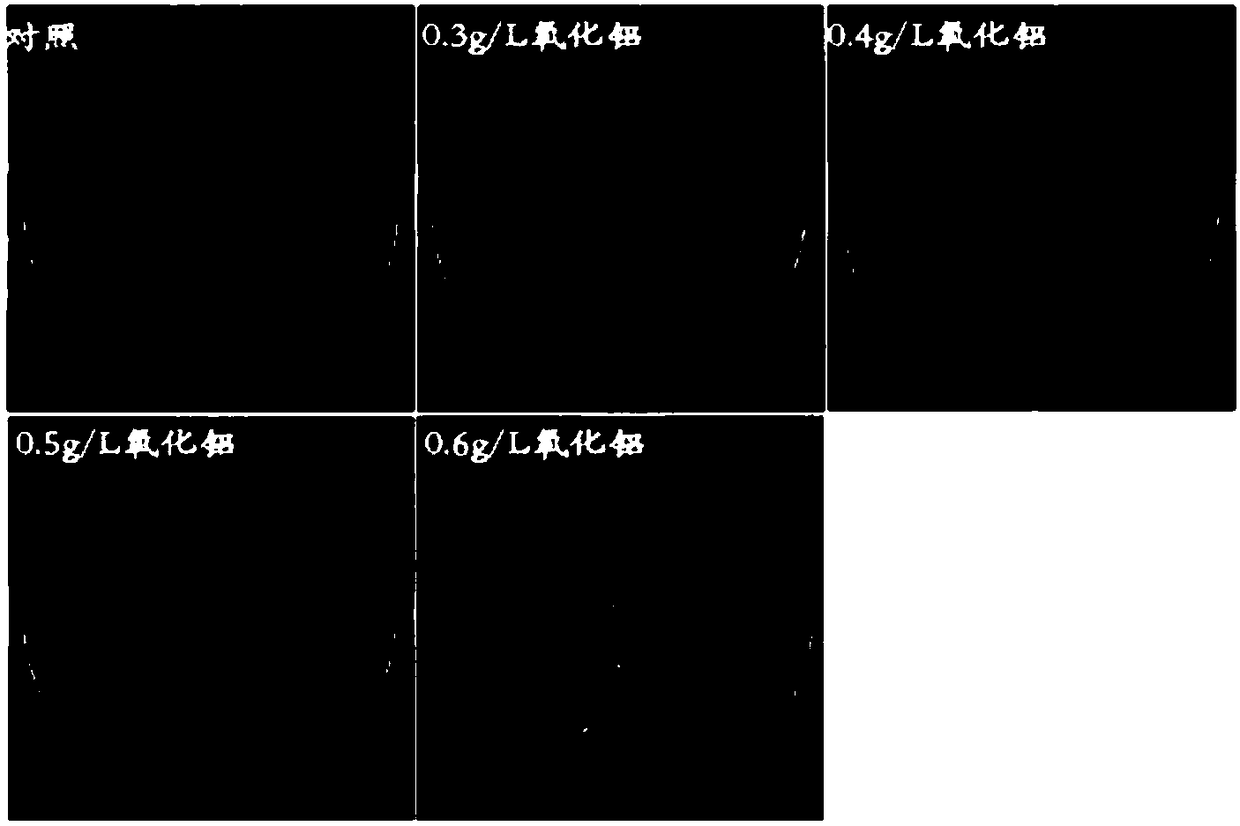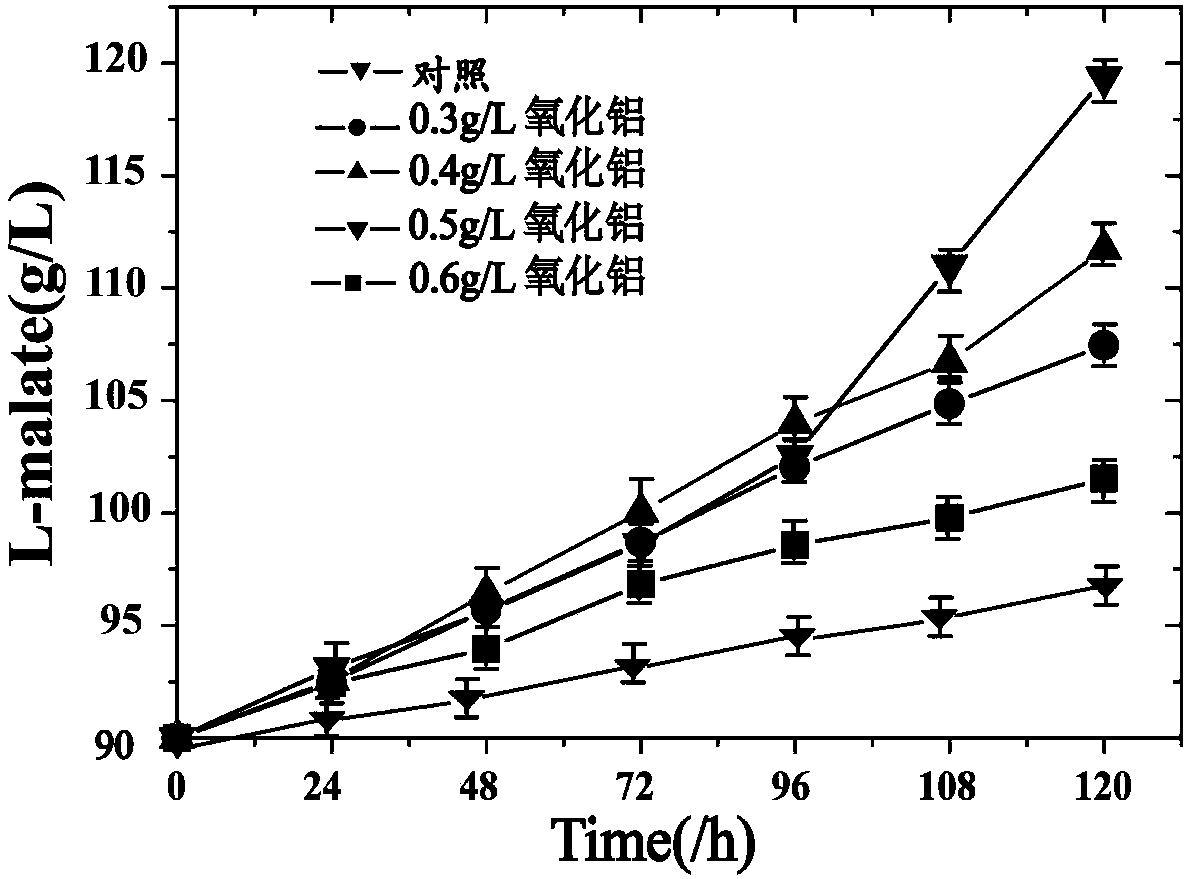Method for improving fermentation property of malic acid
A malic acid and seed technology, applied in the field of microorganisms, can solve the problems of high cost and unsuitable for industrial production, and achieve the effects of improving fermentation performance, being beneficial to dissolved oxygen and mass transfer, and increasing the quantity
- Summary
- Abstract
- Description
- Claims
- Application Information
AI Technical Summary
Problems solved by technology
Method used
Image
Examples
Embodiment 1
[0035] (1) Preliminary isolation and purification of Aspergillus oryzae
[0036]Soil samples were collected from orchards in the surrounding areas of Wuxi, an appropriate amount of soil was taken, put into a 250mL triangular flask filled with 100mL sterile water, shaken, and diluted 10 -4 ~10 -6 were respectively spread on the acid production indicator plate and incubated at 28°C for 3 days. Observe the discoloration of the plate, pick a single colony spore with a large discoloration circle and inoculate it on a solid screening medium, culture it at 28°C for 5 days, separate and purify it until there are no bacteria, and store it on a PDA slant for use.
[0037] (2) Screening of L-malate-producing Aspergillus oryzae
[0038] Take 10 spore-filled bacterial strains obtained from the above isolation and purification, add 5 mL of sterile water to each, scrape off all the spores with an inoculation loop in an ultra-clean bench, shake them up with glass beads, and filter through r...
Embodiment 2
[0042] (1) Slant culture: Inoculate a ring of strains on the slant medium and culture at 28°C for 5 days;
[0043] (2) Seed culture: insert the spore suspension into the seed culture medium with a filling volume of 100mL / 250mL, so that the final concentration of spores is 10 6 cells / mL; cultured for 14 hours at a temperature of 30°C and a shaker speed of 200r / min;
[0044] (3) Fermentation culture: the seed solution was inoculated into the fermentation medium at 10% (v / v), and fermented for 120 h at a temperature of 30° C. and a shaker speed of 200 r / min.
[0045] Fermentation medium (g / L): glucose 100, peptone 6, K 2 HPO 4 0.15, KH 2 PO 4 0.15, MgSO 4 ·7H 2 O0.1, CaCl 2 2H 2 O 0.1, CaCO 3 100.
[0046] The contents of L-malic acid and heteroacids in the fermentation broth were detected by HPLC, and the results are shown in Table 1.
[0047] Table 1 L-malic acid and impurity content in the fermentation broth
[0048]
[0049] Adopt the method of present embodime...
Embodiment 3
[0051] Fermentation medium (g / L): glucose 100, peptone 6, K 2 HPO 4 0.15, KH 2 PO 4 0.15, MgSO 4 7H 2 O 0.1, CaCl 2 2H 2 O 0.1, CaCO 3 90.
[0052] Incline culture, seed culture and fermentation culture conditions are the same as in Example 2.
[0053] Add alumina 0.3g / L to the fermentation medium.
PUM
 Login to View More
Login to View More Abstract
Description
Claims
Application Information
 Login to View More
Login to View More - R&D
- Intellectual Property
- Life Sciences
- Materials
- Tech Scout
- Unparalleled Data Quality
- Higher Quality Content
- 60% Fewer Hallucinations
Browse by: Latest US Patents, China's latest patents, Technical Efficacy Thesaurus, Application Domain, Technology Topic, Popular Technical Reports.
© 2025 PatSnap. All rights reserved.Legal|Privacy policy|Modern Slavery Act Transparency Statement|Sitemap|About US| Contact US: help@patsnap.com



